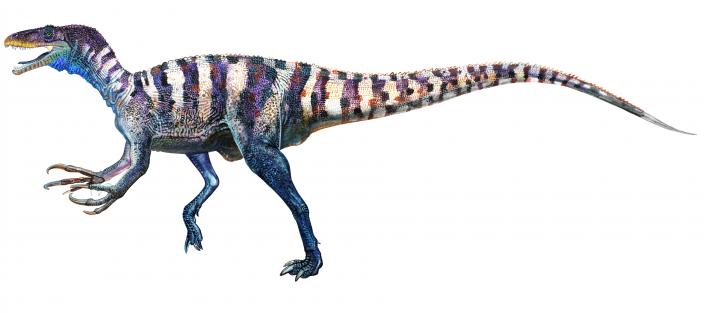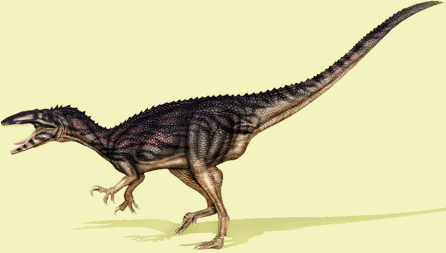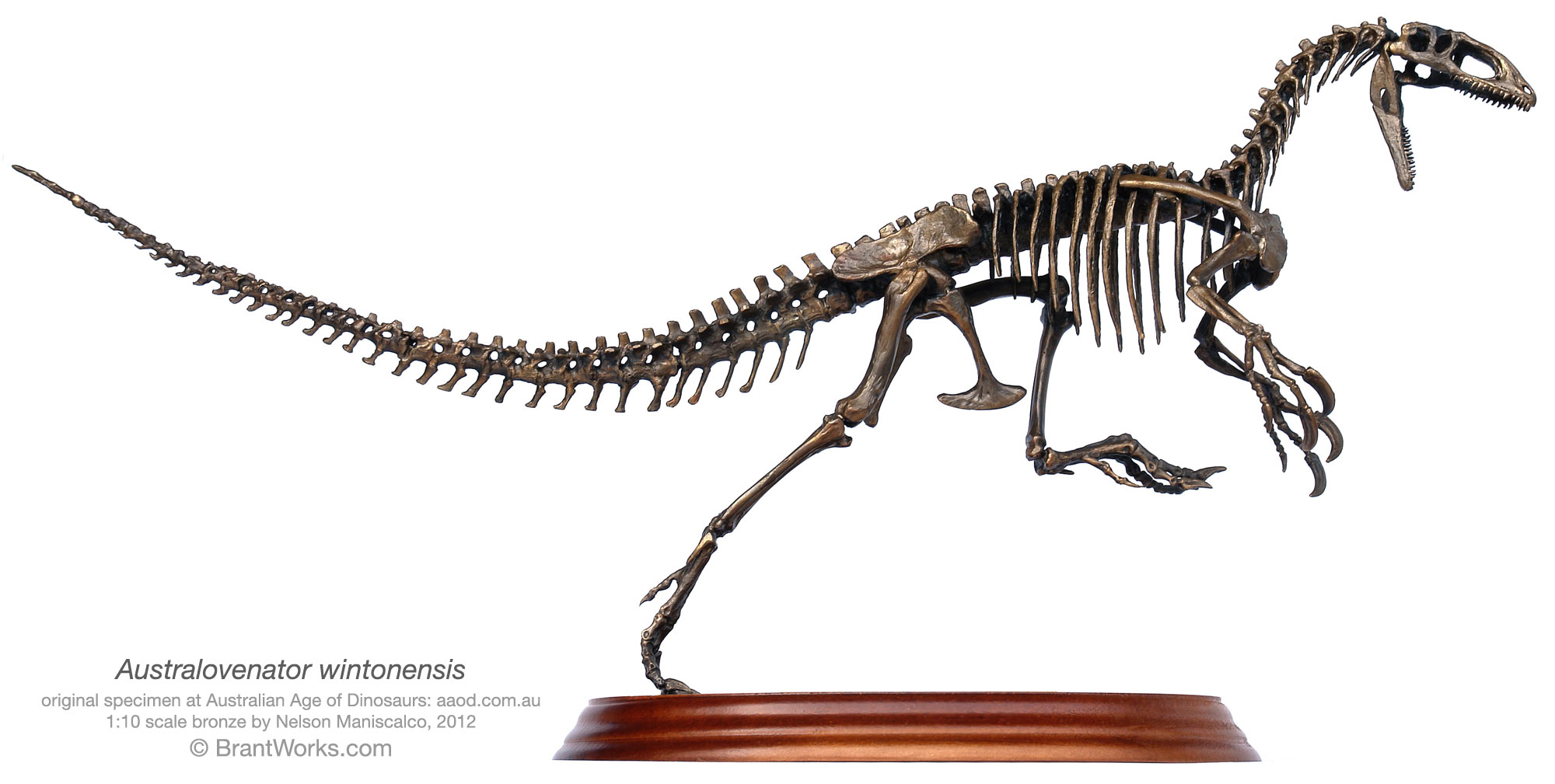Australovenator
Live reconstruction of Australovenator
- Australia ( Winton Formation)
- Australovenator wintonensis
Australovenator was a medium-sized genus of carnivorous dinosaur from the group of Allosauroidea that lived during the Late Cretaceous (late Albian ) in Australia. It is the largest predator that has been found in Australia. The only species of this genus is Australovenator wintonensis.
Description
Australovenator was 6 feet long. Thanks to a hip height of 2 meters, it reached a maximum height of 2.50 meters. The head measured 60 inches, the weight was about half a ton.
Fund history
The fossils are from the Winton Formation near Winton. Here individual skeletal elements found by Australovenator in a clay layer between layers of sandstone, including teeth, a portion of the lower jaw, parts of the front and rear limbs, a portion of the ilium, ribs and belly fins. Until then, only a few small pieces of bone were found from theropod in Australia. In 2009 Australovenator could be reconstructed and described by a team of Australian scientists.
When the layer was found in the Australovenator, it was apparently the legacy of a Altarms the wetland habitat of a river. In addition to the fossil remains of the lung fish Metaceratodus ellioti and the crocodile -like Isisfordia duncani, turtles, clams and snails were found. Also, another dinosaur discovery of this reference could be described in the work of Australian scientists for the first time. It was a herbivorous sauropod, the Diamantinasaurus matildae was called. Diamantinasaurus, named after the running in the vicinity of the reference Diamantina River may have belonged to the prey of carnivorous Australovenator.
After the first description of Australovenator is discussed whether the anklebone found in the early 1980s in the Australian state of Victoria, which was associated with an Allosaurus, is also part of a specimen of Australovenator or a close relative.
System
Australovenator has features of Allosauroidea and seems closely related to the Fukuiraptor and the Neovenator from the Isle of Wight to be found in Japan. However, these two theropods are older than Australovenator and date from the early Cretaceous. Australovenator stands at the junction between the Lower Cretaceous and Upper Cretaceous ( Albian to Cenomanian from ) and can be regarded as an intermediate form at the base of Carcharodontosauridae to which Carcharodontosaurus and Giganotosaurus from South America from Africa belong. The discovery in Australia speaks to the paläobiogeographisch widespread use of this form of group on the supercontinent Gondwana. He can give further insight into the phylogeography of the Cretaceous period.
Naming
Australovenator wintonensis can be translated as " Winton's southern hunter ". The composition Australovenator suggests on the one hand to the location in the Southern Hemisphere (Latin Austral australis - "south " ) down, on the other hand to the predatory lifestyle (Latin venator - " Hunter") of the predator. The specific epithet wintonensis has the city Winton, on whose territory the reference is. This theropod was before it was first described by scientists " Banjo " named in honor of the writer Andrew Barton Paterson, who wrote his works under the pseudonym The Banjo and Banjo Paterson was usually called. Under this name he is known as author of the text of the unofficial Australian national anthem Waltzing Matilda, which he wrote during a stay in Winton. Following this incident also another dinosaur find from the Winton Formation in Winton, a herbivorous Titanosaurier, Diamantinasaurus matildae was called.










